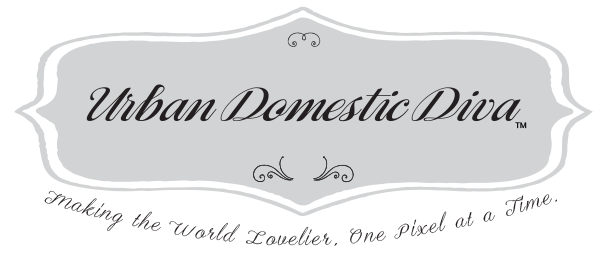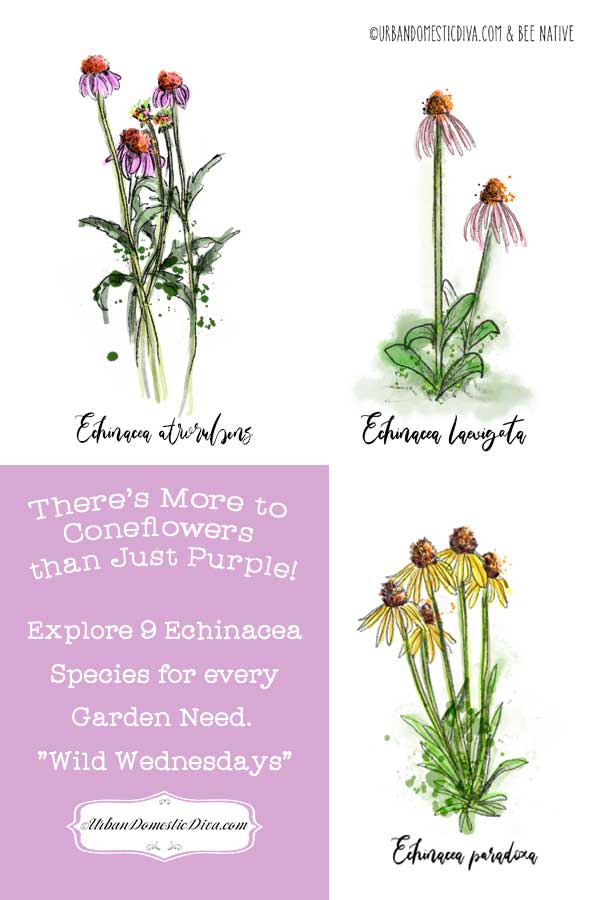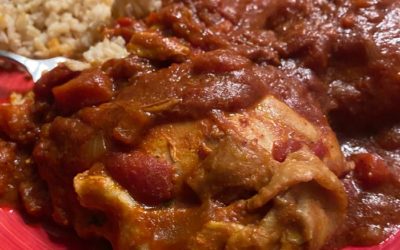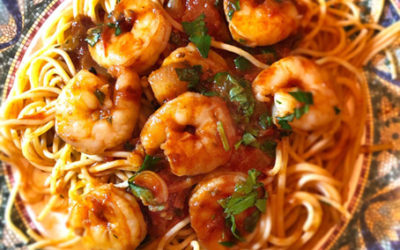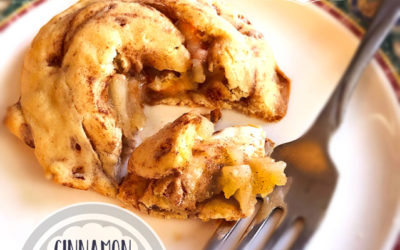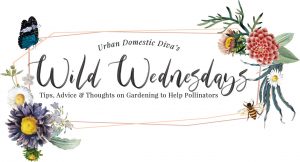
One of the things I love most about writing my books about native flowers and plants is discovering how diverse various flower families are. I discovered this specifically when I was researching plants for my BEE NATIVE! FLOWER POT POWER book. The book was all about finding hidden gems in native flower families that could thrive in smaller gardens and in particular, pots and containers. Native flowers are usually clumped together in an “aggressive prairie plant” bucket by conventional gardeners. The reality is that native flower families have species that thrive in a variety of habitats and growing conditions. Goldenrod, for instance, is considered a bossy aggressive flower native to the prairies of America. Yet there is a whole group of goldenrods that are native to shadier woodlands. These woodland goldenrods are more well-behaved than their prairie cousins, and can also tolerate some shade. If you are struggling with finding some native flowers to help the bees that work within your growing parameters, I urge you to dig a little deeper in certain families, there may be a species that works perfectly for your needs.
So in the spirit of garden inspiration, (after all, some of us are dusting off our garden journals as we peruse seed catalogs arriving in the mail) I am going to do some deep dives into various flower families for some of my “Wild Wednesdays” posts. Today it is all about Echinacea—yes, the “bread and butter” of gardens. This species is known to be drought-tolerant, with long bloom times. But beyond the usual “purple coneflower”, there are species that have different petal structures, different colored pollen, and different colors!
Hopefully, this will give you some ideas as you start planning for spring. Don’t give up on native flowers for your garden. Bees are four times more likely to pollinate a native versus a non-native species, and natives provide much more nutrients for bees and pollinators. Adding native plants and flowers can make a big impact in your backyard.
The Echinacea Family
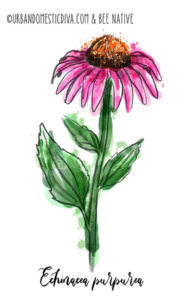
Purple coneflower
Echinacea purpurea
2-4 feet, full sun
The bread and butter of most Midwest gardens, this coneflower is often considered to be the prettiest and very adaptable to a wide range of soils and temperatures.
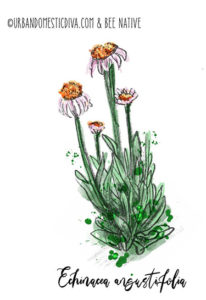 Narrow-leaf coneflower
Narrow-leaf coneflower
Echinacea angustifolia
1.5-2 feet, sun to part shade
This coneflower is the most northerly ranging coneflower. It is also the smallest, and really the hardiest, especially with drought.
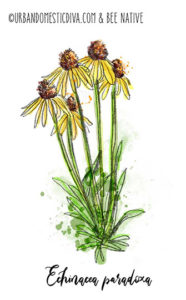 Yellow coneflower
Yellow coneflower
Echinacea paradoxa
2-3 feet, full sun
This flower is the largest in the family, with unique yellow flowers, not purple, thus the name “paradox”.
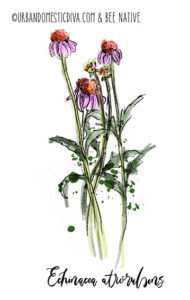 Topeka purple coneflower
Topeka purple coneflower
Echinacea atrorubens
1-3 feet high, full sun to light shade
A rare coneflower, and with a small native footprint in Texas and states north of it, and is best known primarily to be native to Kansas. The blooms range from red to pink, with thin petals drooping down away from the center disc.
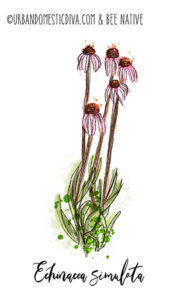 Wavy leaf coneflower/Glade coneflower
Wavy leaf coneflower/Glade coneflower
Echinacea simulata
2-3 feet high, full sun to part shade
This coneflower has very thin ray petals drooping away from the center disc, with pale pink colors. Its pollen is yellow which helps distinguish it from E. pallida (with white pollen), though they look very similar.
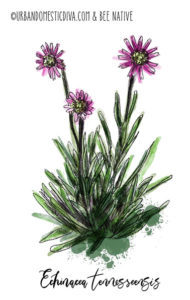 Tennessee purple coneflower
Tennessee purple coneflower
Echinacea tennesseensis
1.5-2 feet high, full sun to part shade
This is a very rare coneflower, and the official wildflower of Tennessee. In 1979, it was one of the first plants to be listed as endangered by the U.S. but was removed from the list in 2011 after successful conservation efforts. A unique aspect of this flower is the upturned ray petals, which are different than the drooping petals typical of the echinacea family.
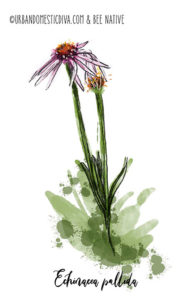 Pale purple coneflower
Pale purple coneflower
Echinacea pallida
2-3 feet high, full sun to part shade
This species produces tall stalks with gorgeous flowers dressed in drooping ray petals, like a ballerina skirt. The pollen on the anthers is white, differentiating it from wavy leaf coneflower, which looks similar but has yellow pollen.
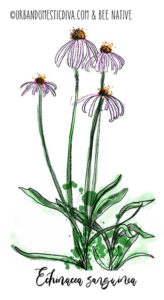 Sanguine purple coneflower
Sanguine purple coneflower
Echinacea sanguinea
1-3 feet high, full sun to part shade
This coneflower is the most southerly-ranging of the species, producing clusters of stately, showy flowers earlier in the season than its cousins. The name “sanguine”, is Latin for “blood”, and refers to the color of the petals.
These flowers sit atop long elegant stalks, like tall ballerinas.
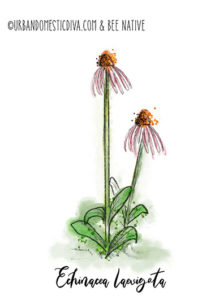 Smooth purple coneflower
Smooth purple coneflower
Echinacea laevigata
1-5 feet high, full sun to part shade
This coneflower is a federally listed endangered species found in the Piedmont regions, specifically in Virginia and North Carolina. This plant had much of its habitat destroyed when areas were converted to pine plantations.
The flower looks similar to pale purple coneflower, yet leaves lay low to the base and are very smooth and elongated, and the flowers are smaller.
********
Would you like some native flowers to decorate your wall? My native wildflower poster on Etsy is a best seller, and a percentage of profits get donated to The Bee Conservancy at year’s end! The poster features my own illustrations, all found in my BEE NATIVE! books as well.
I also created a specific echinacea poster featuring the species in this post! So if you are a coneflower lover and like my watercolors, you can buy the print through my Etsy shop! Click on the poster below.
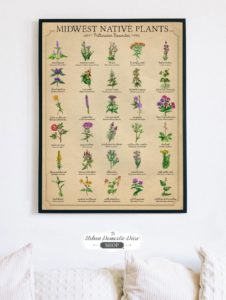
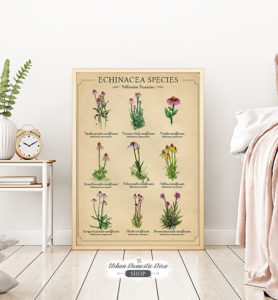
- Sugar-Free, Low-Carb, Olive Oil Chocolate Hazelnut Tart - February 18, 2023
- Easy Slow Cooker French Onion Soup - November 28, 2022
- Recipe: Chicken Vindaloo with Whole Foods Vindaloo Curry Powder - January 22, 2022
